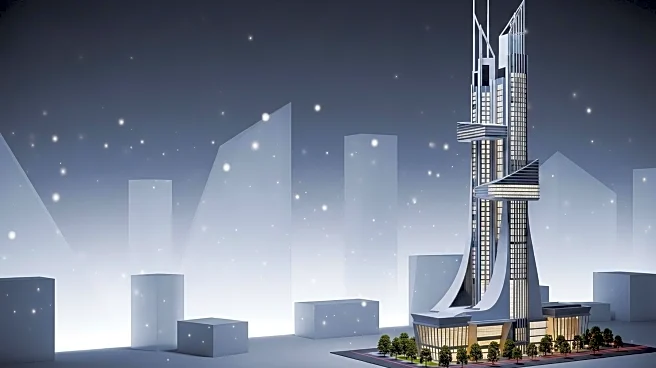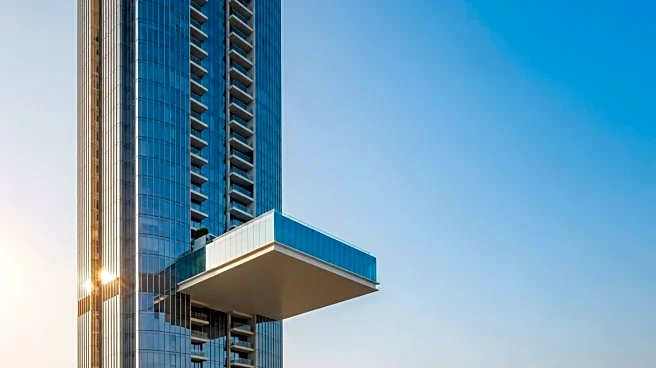What's Happening?
Seattle has unveiled a new 48-story mixed-use high-rise named First Light, designed as a livable piece of art. The tower includes retail, office, and luxury residential spaces, with a standout feature being a cantilevered rooftop pool offering panoramic views of downtown Seattle, Elliot Bay, and Mt. Ranier. The base of the tower is adorned with 'The Veil,' a seven-story glass installation by artist John Hogan, consisting of 10,000 individually set glass discs. The design aims to create an everchanging façade while enhancing privacy. The pool deck, supported by V-shaped concrete columns, required extensive engineering coordination due to its elevation and exposure to environmental factors.
Why It's Important?
The First Light tower represents a significant advancement in architectural design and engineering, pushing boundaries in construction techniques. The integration of art and functionality in urban development highlights Seattle's commitment to innovative and sustainable city planning. This project could set a precedent for future developments, emphasizing the importance of aesthetic appeal alongside structural integrity. The tower's unique features may attract businesses and residents, boosting the local economy and enhancing Seattle's skyline.
What's Next?
As the tower becomes operational, it is expected to draw interest from potential tenants and residents, contributing to Seattle's urban growth. The success of this project may encourage similar developments in other cities, promoting the integration of art in architecture. Stakeholders, including developers and city planners, will likely monitor the tower's impact on the local real estate market and urban landscape.
Beyond the Headlines
The First Light tower's design raises questions about the role of art in urban environments and its impact on community identity. The collaboration between artists and architects may inspire new approaches to city planning, fostering cultural and aesthetic enrichment. Additionally, the engineering challenges faced during construction highlight the importance of innovation in overcoming structural limitations.













